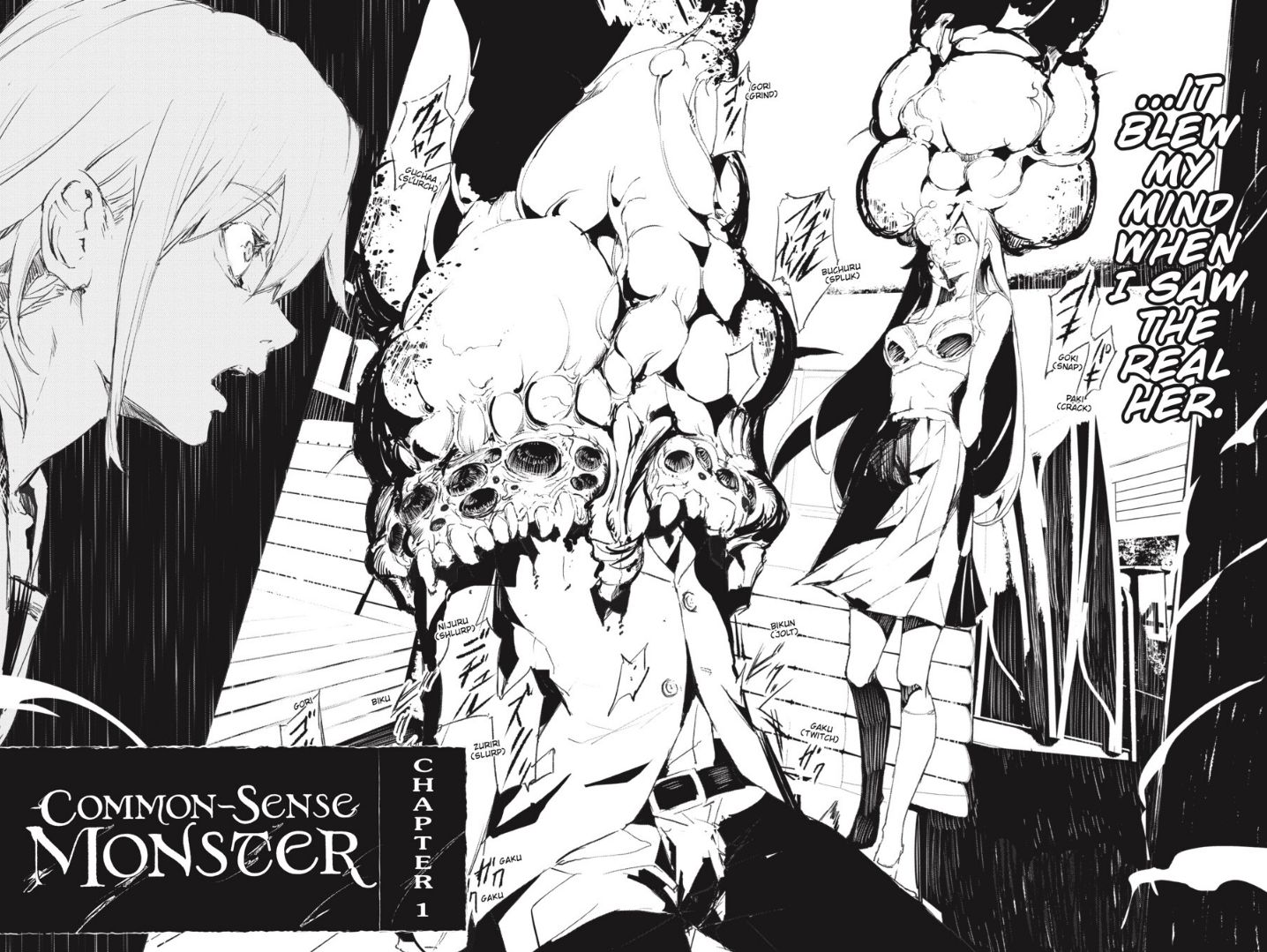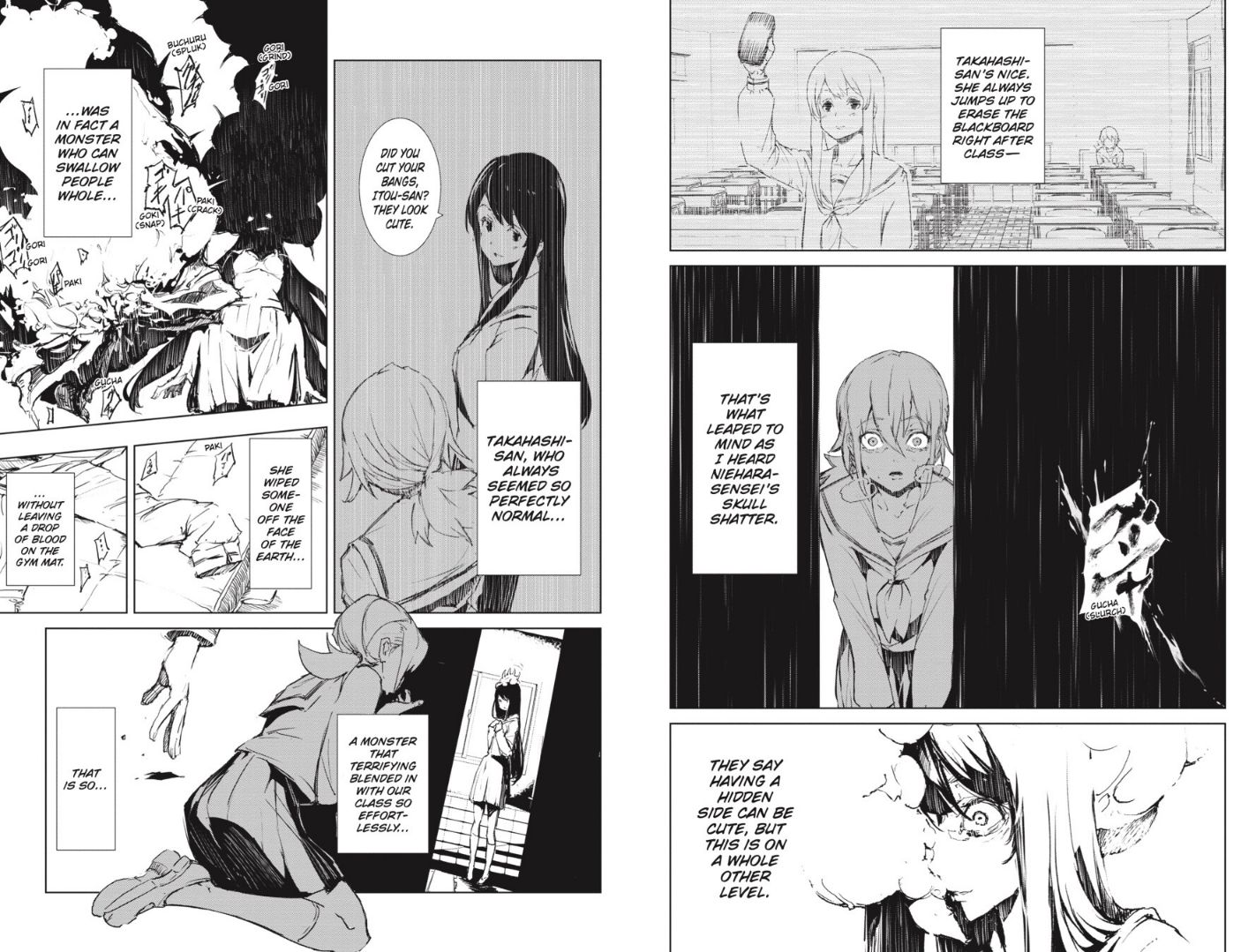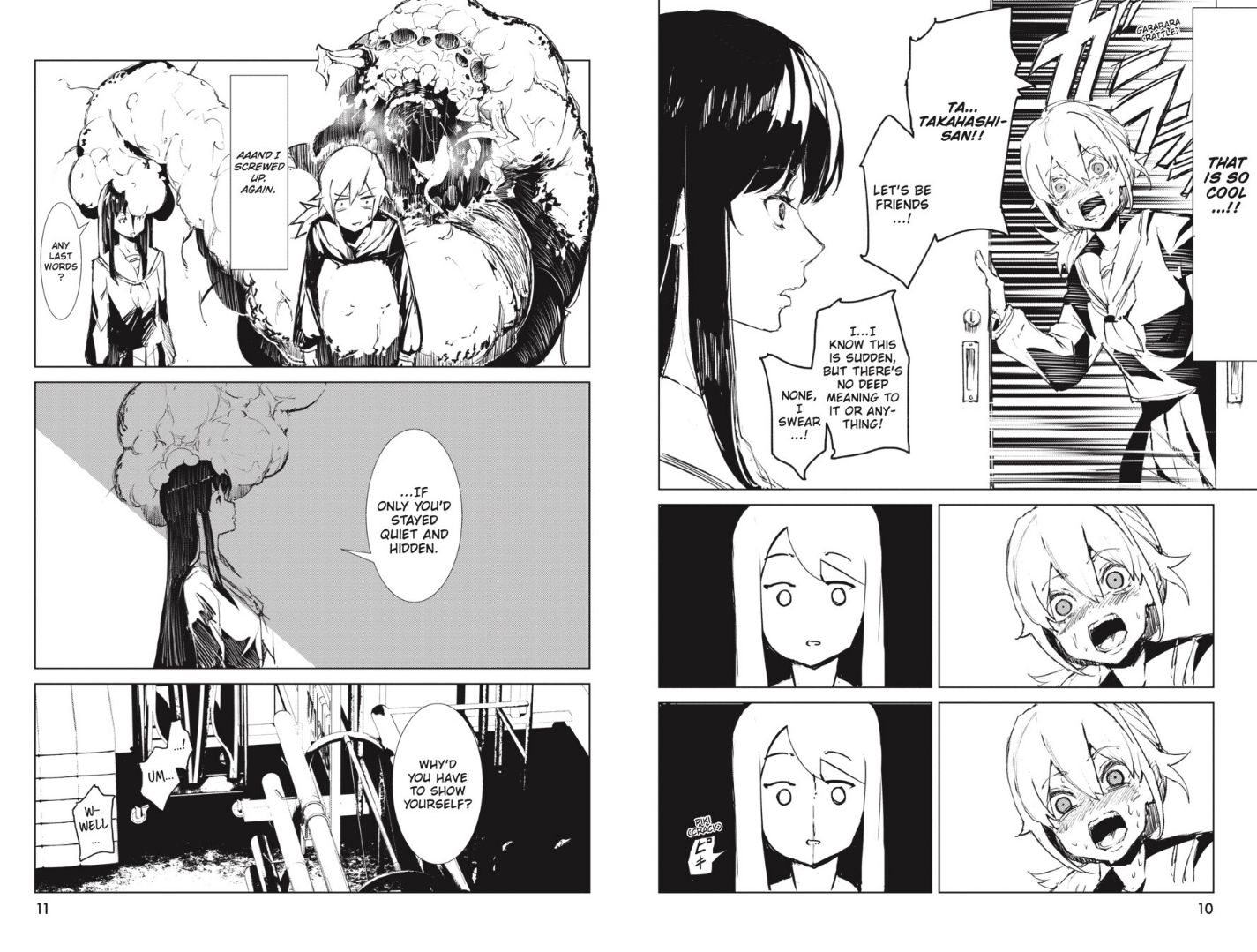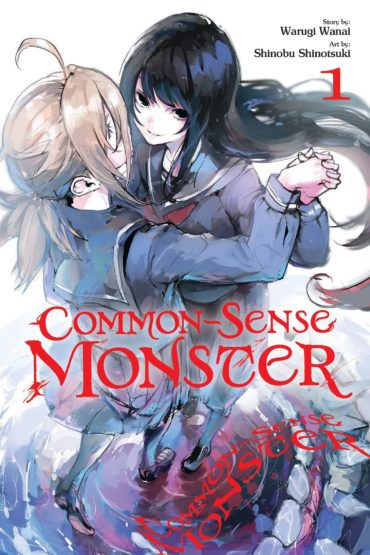Common-Sense Monster Volume 1 Review
“Normal don’t run in our family…so give it up already.”
Itou just wants to be normal; she wants to have friends, she wants to talk like a regular high school girl, and she wants to have the genuine ‘high school’ experience, but her awkwardness and off-beat tastes keep her an outsider at her school. She really looks up to Takahashi, a girl in her class whom everyone likes. However one day Itou decides to take a nap in the gym, and ends up encountering Takahashi EATING one of their teachers. Takahashi is a monster in human form, using a student’s skin to pass off as ordinary in order to eat humans. Itou isn’t scared though, she’s elated! Because if a monster like Takahashi can pass off as ‘normal’, then maybe she can teach Itou! Reluctantly, Takahashi agrees to help Itou be normal, but what’s in it for the monster? Does she have something else up her sleeve?

Common-Sense Monster is a Yuri horror series that recently concluded with its third volume in Japan and has been met with a positive reception, so this horror tale is highly anticipated. Warugi Wanai has written a handful of series, mostly in the comedy and fantasy genre, so quite the 180 from this horror title. It’s also the only work from them that’s currently licensed in English. If you’re already a fan of other queer horror series currently licensed here, including The Summer Hikaru Died and This Monster Wants to Eat Me, and were wondering if this series does its own thing, I’m pleased to say it very much does. So even if you’re a consumer of such dark tales, this book does enough on its own to stand out from the crowd.
First of all, the main heroine here, Itou, is very different from her contemporaries. She isn’t as introverted or quiet as the main characters from the other series; yes, she’s awkward but she’s also very forward with her thoughts and feelings, often to the detriment of others and interrupting what they’re already discussing. Itou is almost neurodivergent coded, in that she doesn’t pick up social cues, very much sees herself on the outside looking in, and often has interest in things outside what other students like (for example, she mentions in one chapter that she’s a fan of a Norwegian song, rather than the typical J-pop). But she wants to fit in, ‘be normal’ as she puts it, very desperately, to the point that I was reminded of the Japanese phrase ‘The nail that sticks out gets hammered down’. However, when given suggestions on how to fit in better by Takahashi, Itou has a habit of brushing them off, saying that it’ll be too hard for her or would come off as ‘forced’, which again rings back to the neurodivergent coding of the character. She wants to fit in but on her own terms, not by ‘masking’, if you will. To me, it seems she wants simply to have a friend who accepts her for what she is, but is so fixated on the idea of ‘normality’ that she doesn’t realise it’s not the same thing. But there’s also hints at darker sides to the character, like the fact that she doesn’t feel scared by Takahashi’s true form, and makes very rash decisions that disregard her safety and health, without a second thought, in order to keep Takahashi around. It’ll be interesting to see where her arc goes across the three volumes.

Then we have the monster herself, Takahashi. She’s closer to the likes of the eldritch creature in The Summer Hikaru Died, in that she takes the form of another student she previously ate (as she puts it, wearing her shell) to pass off as human, but her true form is larger, more demonic and terrifying that anything you’ve seen before. But personality-wise, she’s far more cold and reserved, closer to the likes of H.P. Lovecraft’s eldritch creations in that she’s so far removed from humanity that she doesn’t care about Itou’s feelings. She has no need to grow close to her, the opposite to Hikaru (The Summer Hikaru Died) or Shiori (This Monster Wants to Eat Me) who both feel inclined to get closer to their protagonists. Takahashi can pass off as ‘normal’ because she is very intelligent, observing humans to the point where she can blend in without hassle. This makes her more dangerous because if she can also easily lie about what she likes and pass off as human, it means she can just as easily switch and turn on her monstrous form quicker than you can blink. So in every chapter there’s always a threat of danger, regardless of her being in human or monster form, and Itou being oblivious to it most of the time makes the sense of tension and fear very strong throughout.
I also like that, unlike The Summer Hikaru Died or This Monster Wants to Eat Me, Common-Sense Monster isn’t afraid to show off the whole monster form from the start. The other series usually played coy with it, often only showing parts of it to keep the tension going on what the monster really looked like, but Common-Sense Monster has no reason to hide it, Takahashi’s true form is shown very early on, and we get glimpses of its worm-like design, its numerous teeth, the saliva coming off its mouth and the horror of seeing Takahashi’s ‘shell’ split open in order for the monster to come out. It’s all used very effectively, and makes for great horror.

Art is provided by Shinobu Shinotsuki, and they’re best known for the art for the Tanya the Evil novels, and the art here is fantastic and a highlight for sure. The manga style is all about sharp shadows and contrast; there’s very little shading or grey, usually only solid black, so this makes the horror elements such as Takahashi’s true form, or when the shadows cut across her human face in sinister moments, really effective. I also like the design of the characters: Itou’s wild hair plays into her eccentric character, and her grandmother is very unique and distinct, contrasting what a typical ‘grannie’ looks like but also matches her character (she provides the lovely quote at the top of the review).
John Neal translates this book and provides some handy translation notes at the back, although I wish there was a note on how the title came about. I assume the ‘common sense’ is related to being ‘normal’ in some way, in that the monster uses her common sense to blend in with the humans. However ‘normal’ and ‘common sense’ aren’t the same thing, so I would have liked to know how the title came about and whether it’s a translation thing that it doesn’t match the ‘normal’ theming in the book, or has an alternative meaning.
Despite the odd title, Common-Sense Monster is a scary, deeply dark and fantastic debut of a new monstrous Yuri series. I look forward to seeing where the story does from here and how it’ll conclude in the next few volumes.
Read a preview of the first volume on the Yen Press website.
 Our review copy was supplied by Yen Press.
Our review copy was supplied by Yen Press.


